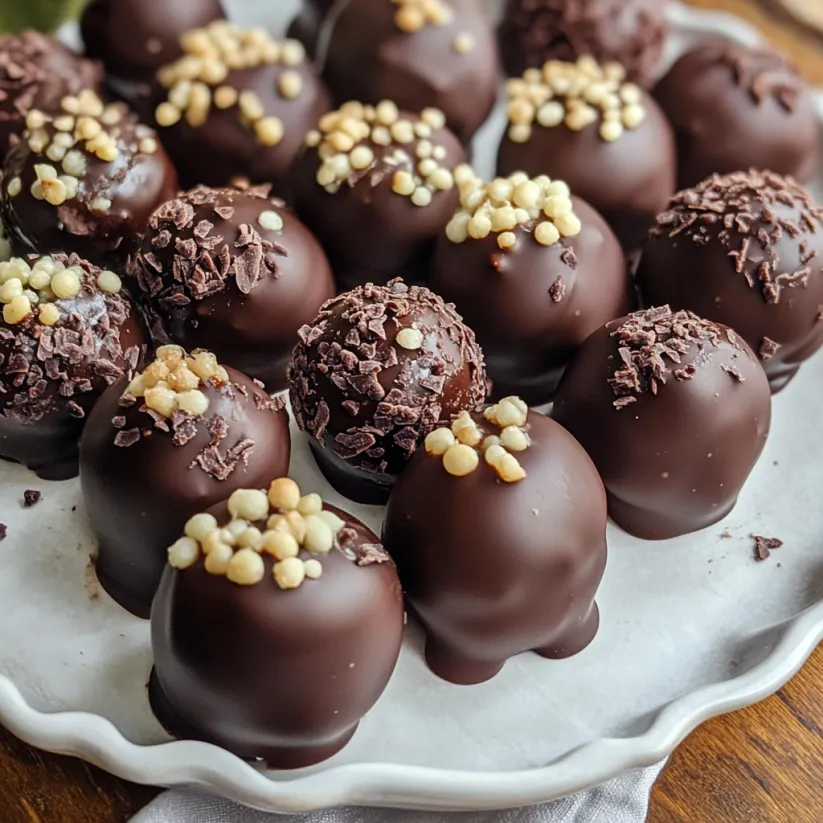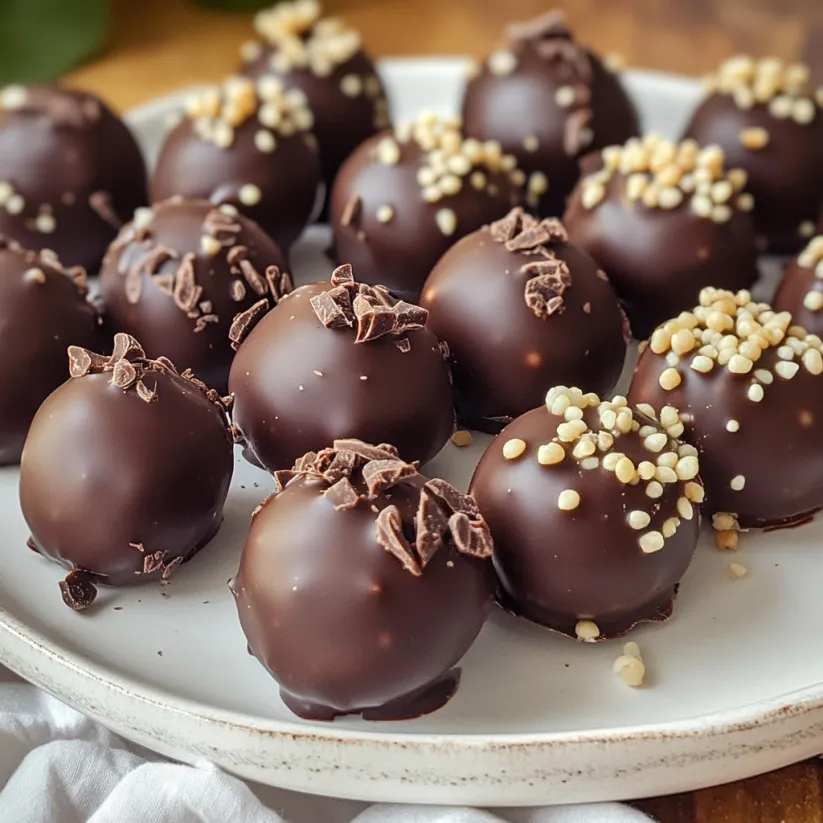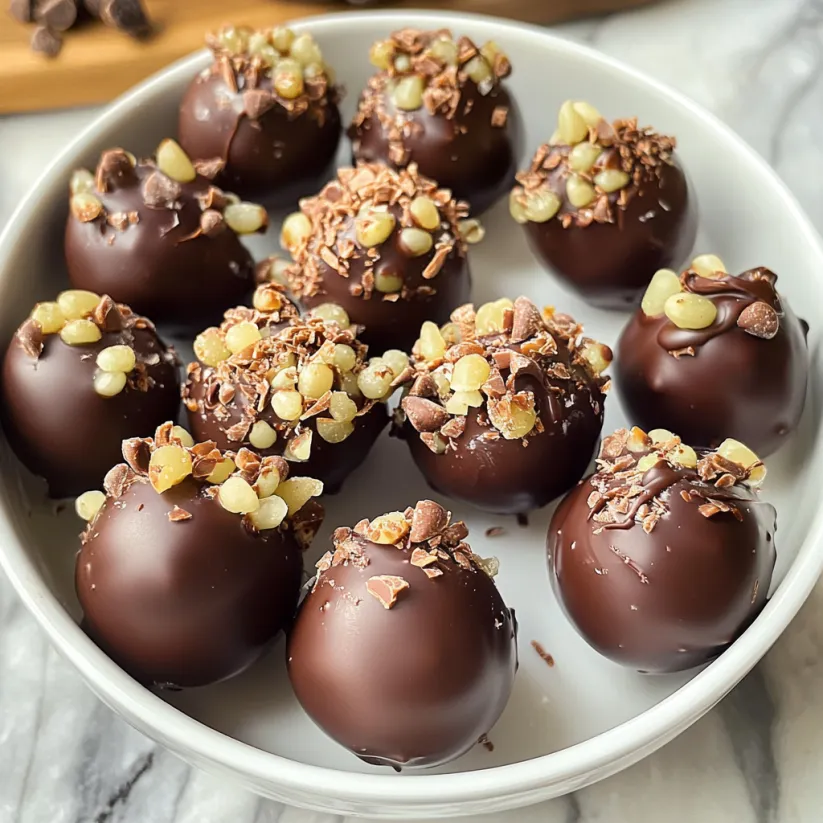 Save Pin
Save Pin
This chocolate covered grapes recipe transforms ordinary fruit into an elegant treat that satisfies sweet cravings while still being relatively wholesome. The perfect balance of fresh, juicy grapes encased in a shell of rich chocolate creates a delightful textural contrast that makes these irresistible for snacking.
I first made these chocolate covered grapes for a summer dinner party as an alternative to heavy desserts. They disappeared faster than any elaborate cake I've ever made, and now they're my go to when I need something sweet but don't want to feel guilty afterward.
Ingredients
- Fresh seedless grapes 15 oz: Choose firm, plump grapes without wrinkles for the best texture and flavor. Red or green varieties both work beautifully.
- High quality chocolate 7 oz: The better your chocolate, the better your final result. Dark chocolate offers antioxidant benefits, while milk chocolate provides a sweeter coating.
- Optional toppings such as crushed nuts or shredded coconut: These add extra texture and flavor dimensions. Salted options create a wonderful sweet salty contrast.
- Toothpicks: Not an ingredient, but essential for easy dipping without messy fingers.
Step by Step Instructions
- Grape Preparation:
- Clean grapes thoroughly under cold water and pat completely dry with paper towels or a clean kitchen towel. This step is crucial because any moisture will prevent the chocolate from adhering properly. Insert toothpicks into each grape to create handles for dipping. This makes the process much cleaner and more efficient than using fingers.
- Chocolate Melting:
- Chop your chocolate into small, even pieces to ensure smooth melting. You can use either a double boiler method for perfectly tempered chocolate or the microwave method for speed. For the microwave, use 50% power and stir frequently to prevent scorching. The chocolate should be completely smooth and glossy when ready.
- Dipping Process:
- Hold each grape by its toothpick and submerge it into the melted chocolate, ensuring complete coverage. Lift and allow excess chocolate to drip back into the bowl, giving a gentle twist to help remove any extra coating. Work quickly while the chocolate remains warm and fluid.
- Adding Toppings:
- Immediately after dipping each grape, roll it in your chosen toppings before the chocolate sets. Press gently to ensure the toppings adhere well. Alternatively, you can sprinkle toppings over the dipped grapes if you prefer a lighter coating.
- Setting Time:
- Place your completed chocolate covered grapes on a parchment lined baking sheet, ensuring they do not touch each other. Refrigerate for at least 15 to 20 minutes until the chocolate forms a firm shell. The cold also enhances the refreshing nature of the treat.
 Save Pin
Save Pin
My personal favorite variation uses dark chocolate with a touch of sea salt. I discovered this combination when experimenting with different toppings, and the way the salt enhances the chocolate while contrasting with the sweet grape creates an absolutely perfect bite. My family now requests these whenever we have movie night.
Storage Solutions
These chocolate covered grapes maintain their quality remarkably well in the refrigerator for 2 to 3 days when stored in an airtight container. The cold environment keeps the chocolate firm and the grapes fresh. For longer storage or a refreshing summer treat, try freezing them. Frozen chocolate covered grapes transform into delightful mini popsicles that slowly thaw in your mouth while you eat them. Perfect for hot weather enjoyment.
Troubleshooting Common Issues
If your chocolate seizes or becomes grainy during melting, it likely encountered moisture or was overheated. Prevent this by ensuring all utensils are completely dry and melting slowly with frequent stirring. For chocolate that won't adhere properly to grapes, double check that your fruit is completely dry before dipping. Even slight moisture can repel the chocolate coating.
Serving Suggestions
Present these chocolate covered grapes on a beautiful platter for elegant entertaining. They make perfect finger food for parties or sophisticated movie night snacks. For a dessert course, serve alongside complementary fruits like strawberries or a small scoop of vanilla ice cream. The combination of temperatures and textures creates a memorable dessert experience without overwhelming sweetness.
 Save Pin
Save Pin
Commonly Asked Questions
- → Why do grapes need to be completely dry before dipping?
Grapes must be thoroughly dried because any moisture will prevent the chocolate from properly adhering to the surface. Water causes chocolate to seize and become grainy, which ruins the smooth texture and appearance of the coating.
- → What's the best chocolate to use for dipping grapes?
High-quality chocolate of any variety works well - dark, milk, or white chocolate all make excellent coatings. The better the chocolate quality, the better the final taste will be. Choose chocolate with a high cocoa content for more intense flavor.
- → Can I freeze chocolate covered grapes?
Yes! Chocolate covered grapes freeze exceptionally well and make a delicious frozen treat, especially in summer. The frozen grapes become almost sorbet-like inside while maintaining the chocolate crunch outside.
- → What toppings work best with chocolate covered grapes?
Popular toppings include finely chopped nuts (almonds, pistachios, peanuts), shredded coconut, colorful sprinkles, sea salt, or crushed cookies. For added sophistication, try cacao nibs, crushed freeze-dried fruit, or finely chopped crystallized ginger.
- → How do I prevent the chocolate from hardening while I'm dipping?
Work quickly and keep the chocolate in the double boiler on very low heat while dipping. Alternatively, for microwave-melted chocolate, return it to the microwave for 5-10 seconds at 50% power if it begins to thicken. Avoid overheating as this can burn the chocolate.
- → Why use a double boiler instead of direct heat for melting chocolate?
A double boiler provides gentle, indirect heat that prevents the chocolate from burning or becoming grainy. Direct heat can quickly overheat chocolate, causing it to seize or develop a gritty texture that won't properly coat the grapes.
